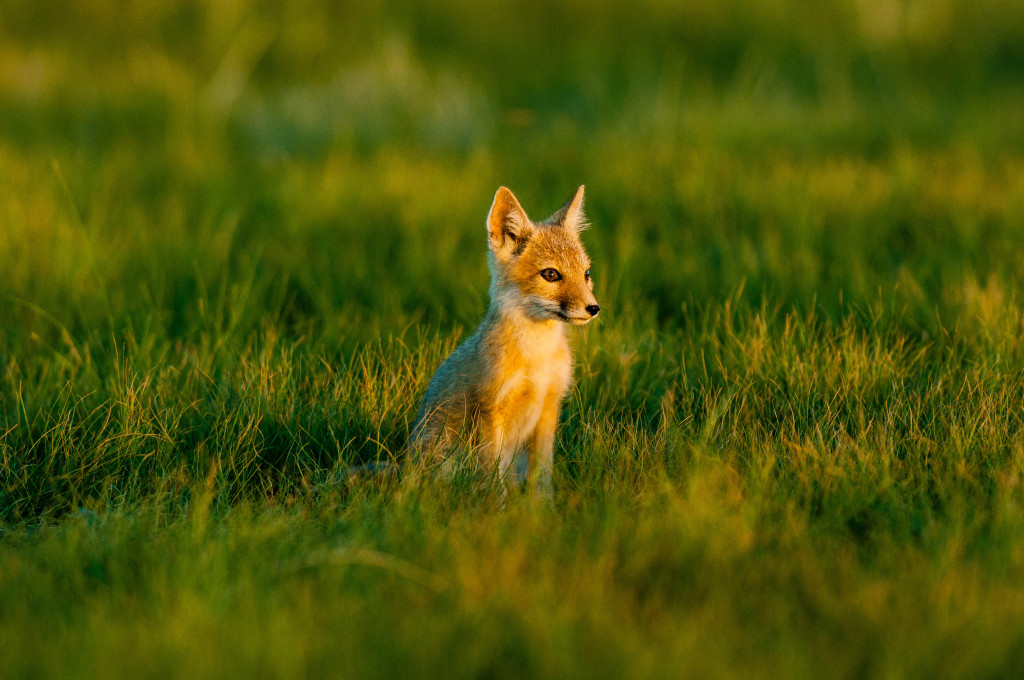
Monica Macoubrie, Wildlife Education Specialist
From the Labrador retriever to the Chihuahua, from the coyote to the swift fox, it’s sometimes hard to see similarities between all these animals when they seem so vastly different. But the truth is, whether it’s a herding dog, lap dog or a wild “dog” you may see out in the prairie, all these canines, or canids, have a single common ancestor.
Canids are mammals in the order Carnivora (carnivores) and the family Canidae, which includes wolf-like canids, fox-like canids, the South American canids and a few other special canids. Scientists believe that canids evolved around 40 million years ago in North America. Fossil records date back to the Oligocene and the Miocene geologic periods, making them one of the oldest extant groups of carnivores. Over a span of millions of years, these animals were able to greatly expand their range, which could explain why canines were the first to become domesticated by humans around 30,000 years ago. Now, you can find canids on every continent except Antarctica.
Canines range in size from the smallest fennec fox, which weights about 1.3 pounds, to the gray wolf, which can weigh up to 175 pounds. Some of these species are purely carnivorous, such as the African painted dog and the dhole of Asia, while others, like the red fox and coyote, are omnivores, eating both plant material and other animals. No canines exclusively eats plants.
Canids are also known to be highly social animals. Species such as coyotes, wolves, African wild dogs and dholes live in packs that sometimes reach up to 40 individuals. This social nature could explain why it was a canid that came out of the wild and formed a special partnership with humans.
Nebraska historically was home to five species of canids, which included the red fox, gray fox, coyote, swift fox and gray wolf. Today, gray wolves are only occasional visitors.
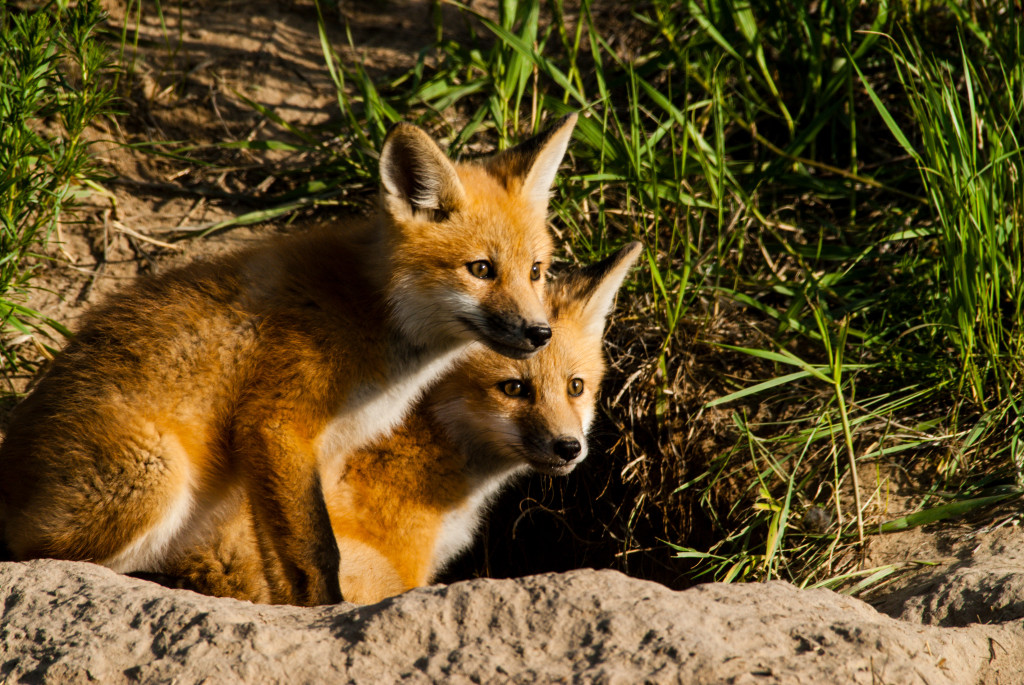
Red Fox (Vulpes vulpes)
This canid is one of the most widely distributed, as well as widely seen, animals in Nebraska. The red fox has adapted well to living in a diversity of habitats, including forests, grasslands, mountains, deserts, farms, suburban habitats and even large cities. Red foxes have a diet that is as flexible as their habitat, feeding on rodents, rabbits, birds and other small game. Being more omnivorous than other canines, red foxes will also eat fruits, vegetables, fish, frogs and even worms. If living among humans, they will opportunistically dine on trash and pet food that is left out.
One of the most distinguishing features of a red fox is their big, bushy tail. This thick tail is used for balance, but it has other uses as well. A fox will use its tail, also called brush, as a warm cover during cold weather and as a signal to communicate with other foxes, even though individuals are mainly solitary.
In winter, foxes meet to mate. You may have even heard the screech of a female, which can sound like a human screaming bloody murder – according to someone who listens to too many true crime podcasts. Right after mating, a female will build a den and give birth to a litter of two to 12 pups. At birth, the foxes are brown or gray, and they will normally grow into a red color by the end of their first month. However, depending on genetics, red foxes could be golden, reddish-brown, silver or even black. Both parents will take care of the young until the next fall, when the young foxes will set out on their own.
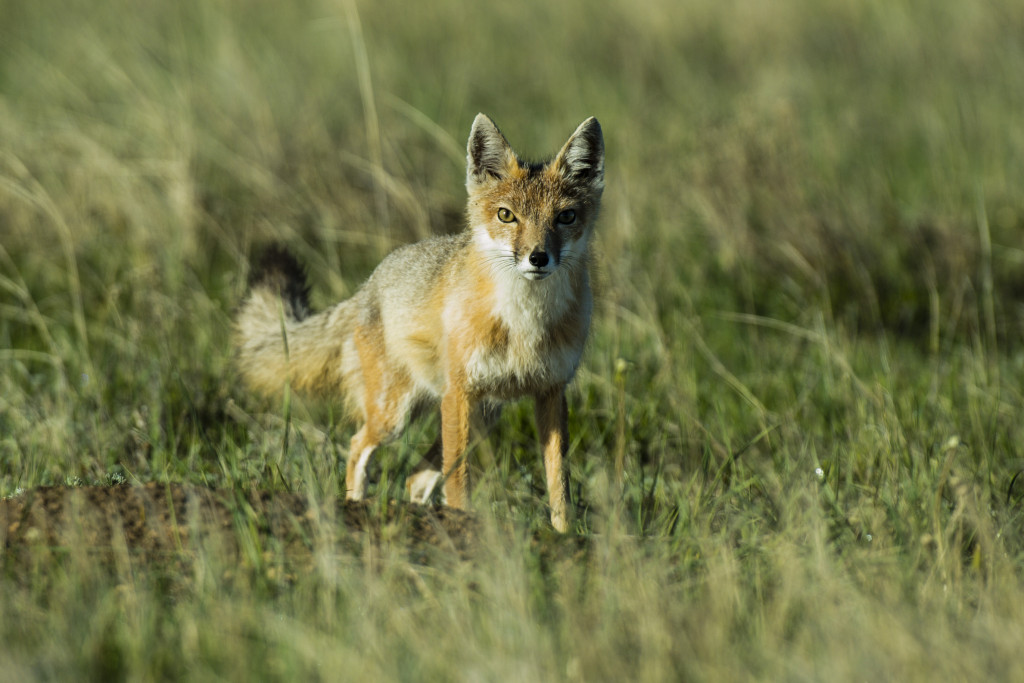
Swift Fox (Vulpes velox)
The swift fox is the smallest living canine in North America, weighing 3-7 pounds and 27-32 inches in length. This animal is around half the size of its cousin, the red fox. The color of the swift fox varies depending on the season. In the winter, the swift fox is grayish-tan on the back and buff orange underneath. In the summer, its back is red-tan with a long bushy tail that’s black tipped; its throat and chest are a cream color and black markings are visible on either side of the snout.
The black patches on the nose help distinguish swift foxes from coyotes. The pale front chest and legs help distinguish them from the red fox. The ears of swift fox are also unusually large, an adaptation which helps them better hear their prey and predators.
Swift foxes require open shortgrass prairie with few shrubs and trees, and they often use badger and prairie dog dens to raise their young. They rely on grasses remaining short through grazing, haying or fire to be able to scan for predators. While coyotes and red foxes will only use dens during breeding season, swift foxes use them year-round. To avoid predators and parasites, such as fleas, they will move to several different dens during the year.
The swift fox is considered omnivorous, even though most of their diet is meat. This animal will prey on small mammals, such as prairie dogs and ground squirrels as well as birds, reptiles, amphibians, fish and insects. Breeding for the swift foxes occurs in late winter from February through March and may continue to April or May in some areas. Kits emerge from their dens three to four weeks after being born.
Today, the swift fox can be found in a very limited area in the western edge of their historic range. In Nebraska, you can only find them in the southwestern corner of the panhandle. The swift fox is the only canine that is on the state’s endangered species list. This is due to habitat destruction and eradication efforts for predators; many swift foxes are accidentally killed by control methods aimed at coyotes, such as trapping and poisoning. All swift fox sightings should be reported to the Nebraska Game and Parks Commission.
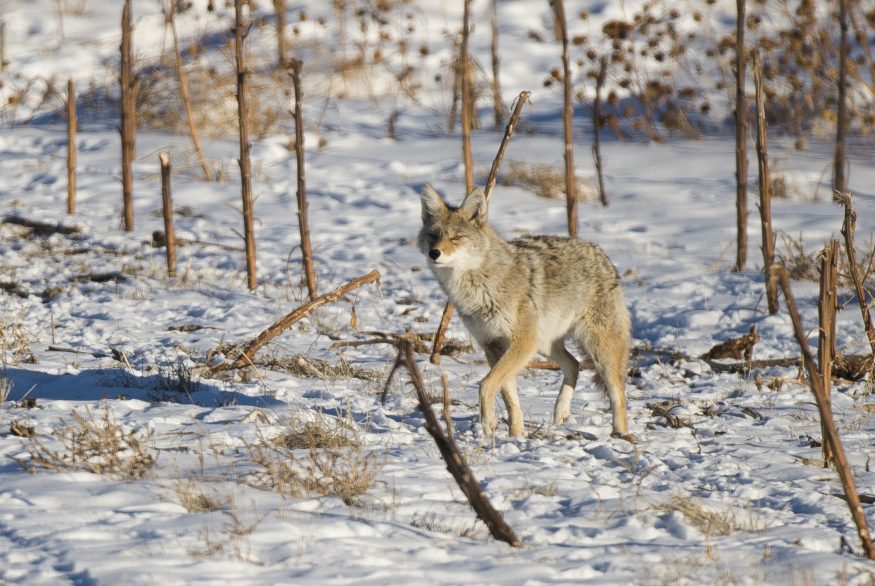
Coyote (Canis latrans)
Coyotes appear in many indigenous tales and traditions as being savvy and clever, evidenced in real life by the clever ways in which they have adapted to the changing American landscape. Once a primarily prairie and desert-dwelling animal, coyotes now roam forests, mountains and urban landscapes throughout North America. They also are not picky eaters: Coyotes will hunt rabbits, rodents, fish, frogs and even deer. They will also dine on snakes, fruit, grass, insects and carrion. Scientists believe that coyote populations are at an all-time high. Many farmers and ranchers view these animals as destructive pests.
Coyotes are smaller than wolves, but larger than foxes. With keen vision and a strong sense of smell, these highly sociable animals can run up to 40 miles per hour as well as form packs in the fall and winter to increase efficiency when hunting. Coyotes are also known to form strong family groups. During the spring, females will den and give birth of three to 12 pups. Both parents feed and protect their young and territory. The following fall, the pups are able to hunt on their own.
Coyotes are some of the most vocal canines in North America. When people hear these animals, they often assume they are hearing a large group of coyotes, when in reality, they are normally hearing only a few animals at a time. This is an auditory illusion known as the “beau geste” effect. Coyotes can produce a variety of sounds, and they use the environment to distort these vocalizations — two of these tricksters can sound like seven or eight animals at one time. Also known as “sound dogs,” the coyote has two long-distance calls: The first is a group yip-howl and the second is a separate howl and bark.
Coyote myths are prevalent, and such myths exacerbate the misconceptions that the general public has about these animals. There is an apparent need to educate the public about a coyote’s behaviors and capabilities.
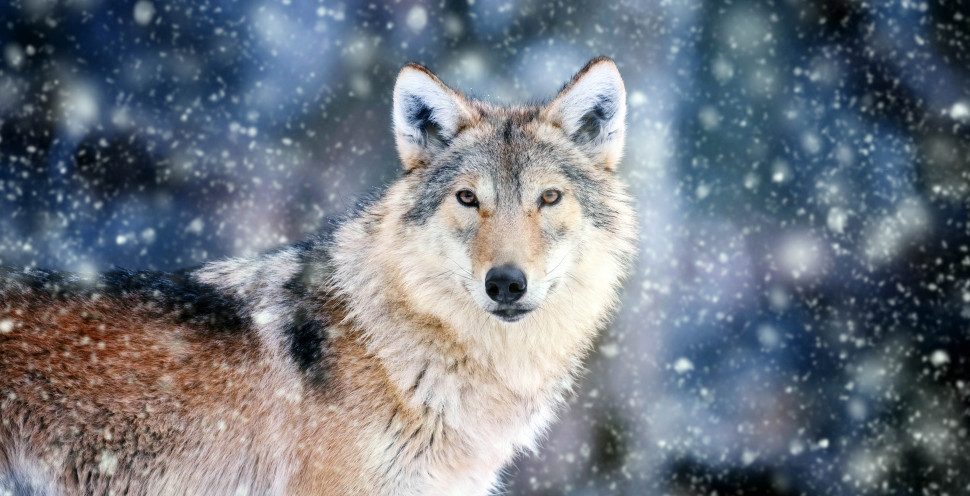
Gray Wolf (Canis lupus)
The gray wolf is the largest canid and had the widest historic distribution of all mammals, other than humans. At one time, gray wolves roamed most of the northern hemisphere, including almost all of North America, Europe and Asia. Today, their range in North America is mostly isolated to the dense forests of the Great Lakes region, the northern Rocky Mountains, northern California and the Pacific Northwest, Canada and Alaska.
Adult gray wolves are larger than most common dog breeds, standing around 30 inches in height at the shoulder and normally weighing 70-130 pounds, although the heaviest wolf ever recorded weighed 175 pounds. Despite the name “gray wolf”, early explorers of Nebraska described their fur color as gray, dusky, white, brown, black and even yellow. A pack of wolves averages around eight animals that consist of a dominant pair, which produces pups for the pack and may mate for life, and their subordinate offspring of various ages. It is essentially a family group guided by the older parents.
These animals are known for their cooperative hunting packs, which allow them to focus on large herbivores such as bison, elk, moose, white-tailed deer and mule deer. However, wolves are also adapted to eating smaller animals, such as insects, plant matter and small mammals. They will even scavenge when necessary. Unfortunately for livestock owners, and for the wolves themselves, wolves also sometimes depredate livestock.
In Nebraska, wolves have been part of our historic past, just like mountain lions and bison. The Nebraska Game and Parks Commission has documented wild wolf presence in Nebraska on five occasions in modern times. This is not unique to Nebraska, as all neighboring states have also confirmed the presence of dispersing wolves. The five that made it to Nebraska were not collared or ear-tagged, so determining their origin required genetic testing. Results of those tests showed that all five individuals came from the Great Lakes population.
The first modern confirmation was a male wolf shot along the Boone and Greeley county line in 2002. Then, four more confirmations were made between 2020 and 2022: 1) a male in Rock County in November 2020, 2) a female in Dodge County in January 2021, 3) a male in Butler County in November 2021, and 4) a female in Custer County in January 2022.
Despite these confirmations and unconfirmed reports, there is no evidence of resident wolves or reproduction in Nebraska.
Gray Fox (Urocyon cinereoargenteus)
Gray foxes are among the most elusive of the canines in Nebraska. These foxes are slightly smaller than their red cousins only weighing 6-15 pounds. As you may have guessed a gray fox is also normally grey with coarse salt and pepper gray hair and black markings on the head, nose and muzzle. They normally have a medial black stripe down the top of the tail with a black tip. These canids are unique as they are one of two species of canids that can climb trees. They have adaptations such as rotating wrists and semi-retractable claws that help them climb up to a high den, to forage and to escape predators. However, climbing is risky business as they are not great at getting down and can easily injure themselves in the process.
Historically this fox occupied a wide range in eastern Nebraska and extended its range into some western counties that bordered the Platte River. In the 70s and 80s, there were a few live specimens trapped, along with a skull of a gray fox that was found near Valentine National Wildlife Refuge. Nebraska’s population is extremely limited, but our state does allow hunting and trapping of this species within season.
